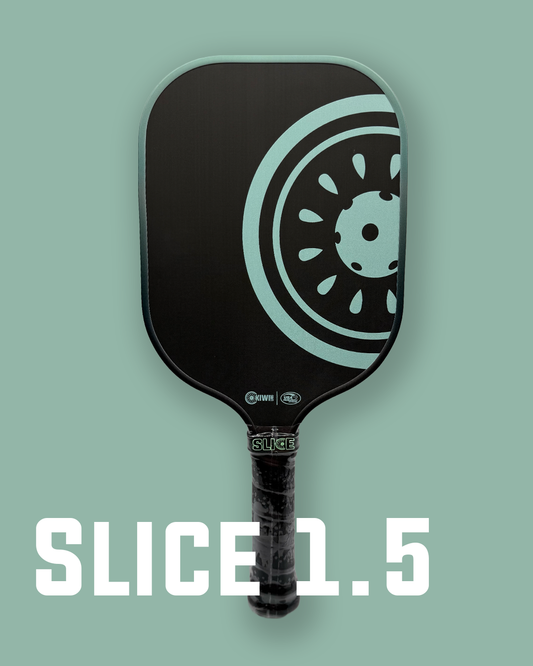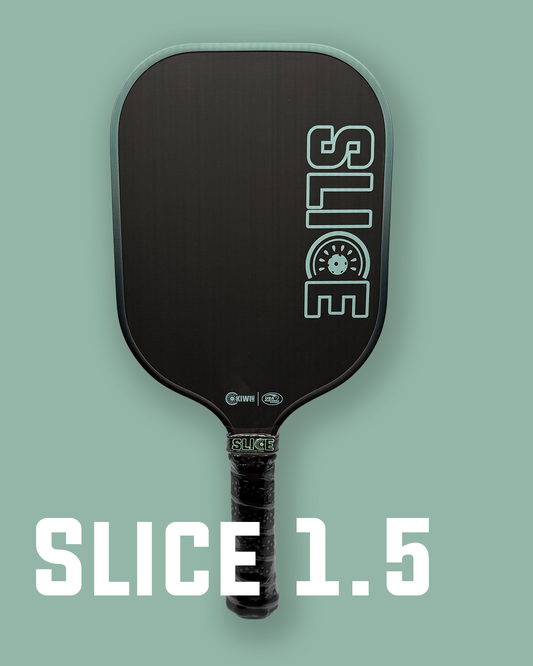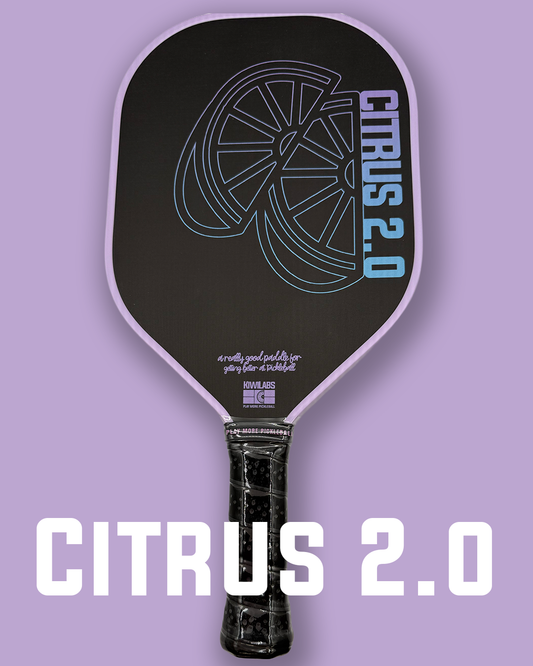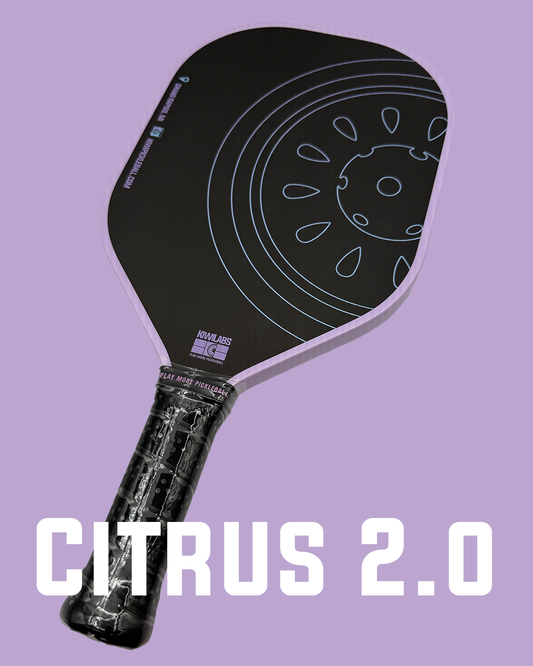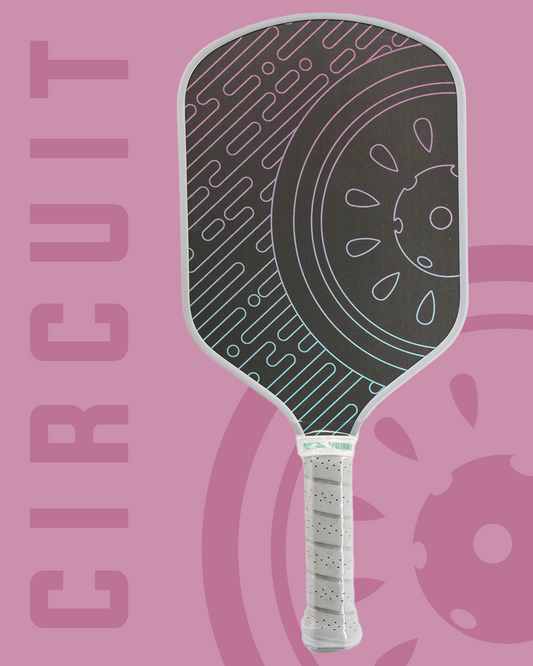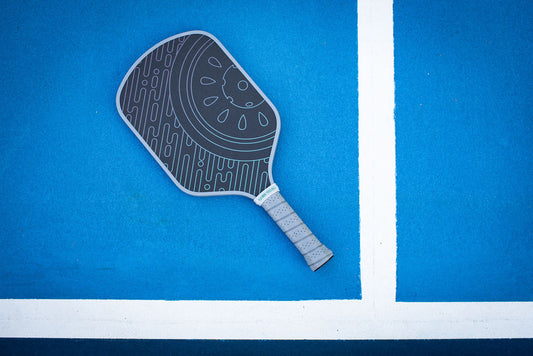The Different Materials Used in Pickleball Paddles
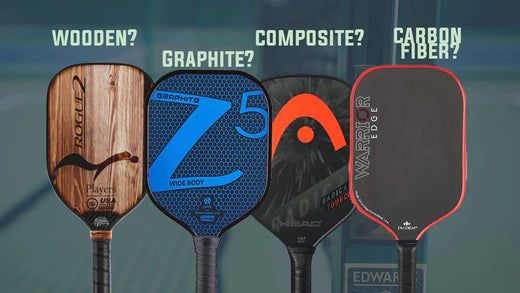
The Different Materials Used in Pickleball Paddles
As the popularity of Pickleball continues to grow, the demand for high-quality Pickleball paddles also increases. With so many different materials used in Pickleball paddles, it can be difficult to know which one to choose. In this article, we will discuss the various materials used in Pickleball paddles and the pros and cons of each. By the end of this article, you'll be able to make an informed decision and find the perfect Pickleball paddle for your game.
Graphite Pickleball Paddles
Graphite paddles are the most popular choice among Pickleball players. They are lightweight, durable, and offer excellent control over the ball. The graphite material is made up of layers of carbon fibers that are tightly woven together, creating a strong and lightweight structure. This results in a paddle that is easy to maneuver, and provides great ball control.
One of the major benefits of a graphite paddle is the large sweet spot. This is the area of the paddle that provides the most power and control over the ball. With a graphite paddle, the sweet spot is larger than other materials, making it easier to hit accurate shots.
However, graphite paddles can also be more expensive than other materials. They also tend to have a stiffer feel, which can take some getting used to.
Aluminum Pickleball Paddles
Aluminum paddles are also a popular choice among Pickleball players. They are strong, durable, and have a softer feel than graphite paddles. The aluminum material provides a softer touch and reduces the amount of vibration felt in the hand, making it more comfortable to use for longer periods of time.
Aluminum paddles are also resistant to scratches and dents, which makes them a great choice for players who play on rough surfaces. They are also typically less expensive than graphite paddles.
However, aluminum paddles can be heavier than other materials, which can make them more difficult to maneuver. They also have a smaller sweet spot than graphite paddles, which can make them less forgiving when it comes to hitting the ball accurately.
Composite Pickleball Paddles
Composite paddles are made up of a combination of materials, typically fiberglass and polymer. They offer a good balance between power and control, and are often more affordable than graphite paddles.
Composite paddles are also known for their durability and resistance to scratches and dents. They are a great choice for players who play on rough surfaces or are hard on their equipment.
However, composite paddles can be heavier than graphite paddles, which can make them more difficult to maneuver. They also tend to have a smaller sweet spot than graphite paddles.
Wooden Pickleball Paddles
Wooden paddles were the original Pickleball paddles and are still used by some players today. They offer a classic look and feel, and are typically less expensive than other materials.
However, wooden paddles are not as durable as other materials and can warp over time. They also have a smaller sweet spot than other materials, which can make them more difficult to use for beginners.
Other Materials There are also a few other materials used in Pickleball paddles, such as Kevlar and Nomex. These materials offer unique properties, such as heat resistance and shock absorption, but they are not as common as the materials mentioned above.
Carbon Fiber Paddles
Benefits of T700 Carbon Fiber Paddles
T700 carbon fiber paddles are quickly gaining popularity in the pickleball world, and for good reason. Here are some of the benefits of using a T700 carbon fiber paddle:
-
Lightweight: T700 carbon fiber paddles are incredibly lightweight, making them easy to maneuver and swing. This is especially helpful for players who prefer a faster swing speed or who need to react quickly to shots.
-
Durable: T700 carbon fiber is a high-strength material that can withstand heavy use and impacts. This means that a T700 carbon fiber paddle is less likely to crack or dent, and can last for a long time with proper care.
-
Stiffness: T700 carbon fiber is a very stiff material, which can help provide a more consistent and accurate shot. This stiffness can also help reduce vibrations and minimize the amount of shock felt in the hand, which can help prevent injury.
-
Increased power: The stiffness of T700 carbon fiber also means that it can provide a lot of power in each shot. This can be helpful for players who want to add more speed and strength to their game.
-
Improved feel: While some people may prefer the soft feel of a wood paddle, T700 carbon fiber paddles can offer a more precise and responsive feel. This can be helpful for players who want to feel more connected to the ball and have better control over their shots.
Overall, T700 carbon fiber paddles can offer a range of benefits for pickleball players who are looking for a high-quality paddle that can help them improve their game. With its lightweight, durable, stiff, and powerful qualities, a T700 carbon fiber paddle may be the perfect choice for players of all skill levels.
Conclusion
Choosing the right Pickleball paddle material is a personal decision that depends on your playing style and preferences. Graphite paddles are a popular choice for their lightweight and large sweet spot, while aluminum paddles offer a softer touch and resistance to scratches and dents. Composite paddles offer a good balance between power and control, while wooden paddles offer a classic look and feel. Consider the pros and cons of each material and try out different paddles to find the

